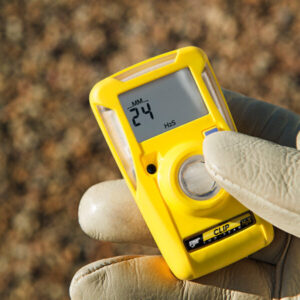The 19 Point Safety Checklist That Will Save Your Company Thousands (From OHS Regulations & Penalties): Part 1
The development and maintenance of an effective Occupational Health and Safety (OHS) Program is vital to preventing injuries and other accidents at your business. It’s also a key to saving your business from Occupational Health and Safety regulation penalties.
Canadian Company: Legal Cases
In 2016, one Canadian Based Company was fined $1 million after one worker died and another was critically injured by a Rock Crushing Machine while attempting to clear a jam.
In 2013, a separate company based in Canada was fined $250,000, and two of its directors received 25-day jail sentences for infractions that led to the death of a warehouse worker. And those are just a few cases.
To protect your business from workplace injuries as well as from thousands of dollars in OSHA fines, we’ve compiled a 19-point safety checklist for your company.
This checklist covers a few of the most common workplace Health and Safety topics and hazards. It’s not an extensive list, but should be used as a “General Responsibilities List” that should be modified for your specific business needs.
This week, we will cover the first 10 of 19 Safety Points.
The remaining 9 Points will be considered in next week’s article.
1. Written Instructions
OHS Regulation Section 3.3 (c) requires businesses to include “appropriate written instructions available for reference by all workers.”
These instructions should be posted in an easy-to-access area and should be clean and readable. The material should also be updated frequently to match any changes to your business. The procedures should list the steps to perform a task safely.
Below are some of the activities where the OHS requires written instructions:
– Lockout
– Confined Space Entry
– Fall Protection
– Personal Protective Equipment (PPE)
– Violence in the Workplace
– Emergency Evacuation
2. Floors and Walkways
Floors should be free of loose material, debris, and worn carpeting. It’s also important to have plans in place to avoid slippery, oily, or wet floors. Aisles should be clear of material and equipment and be at least one meter wide. Also, if supplies or materials are stored on the floor, they should be stacked no more than three boxes high and kept away from doors and aisles.
3. Fire Safety and Security
OHS Regulations part 31 deals with Fire Safety. All fire extinguishers should be clearly marked and properly installed. Fire extinguishers need to have been inspected in the last year with workers trained to use them.
Flammable liquids should be properly stored with appropriate smoke, fire, and burglar alarms in place. Emergency phone numbers should be placed close to phones, and if space heaters are used, they should be set to shut off automatically if tipped over.
4. Stairs, Ladders, and Platforms
Part 13 of the OHS Regulations states that ladders must be in safe and good condition with anti-slip treads. Stair handrails should be securely fastened to the wall and maintained. Stairwells should also be kept clear of materials and equipment.
5. Lighting
Lighting levels must be adequate for work areas including being free of glare or excessive lighting contrast as described in Sections 4.64 – 4.69. Task lighting should be provided in areas of low light or high glare. If windows are present, they should be covered with blinds, drapes or other means of controlling the light. Emergency lighting should also be checked for functionality.
6. Storage
Supplies and materials should be stored properly on shelves to minimize lifting problems, explains OHS Section 4.43. For heavy items, trolleys or dollies should be available, which means floors around shelves should be clear of rubbish.
7. Electrical
Electrical cords should be in good repair and secured to avoid tripping or electrical hazards, state Section 19. Clear access should be available to electrical panels and switch gear, and if required, ground fault circuit interrupters should be available. Plugs, sockets, and switches should be in good condition, and proper plugs should be used.
Workers who interact with electrical circuits and connections must be adequately trained, and all energized equipment must be labeled as dangerous.
8. Equipment and Machinery
According to Section 12, equipment and machinery should be kept clean and regularly maintained. Start and stop switches should be clearly marked and within easy reach with operators properly trained. Machinery should also be adequately guarded with a lockout procedure in place.
Within the space that contains the equipment, noise levels, fumes, and exhaust should be controlled.
9. Entrances and Exits
All emergency exit signs should be checked to ensure they are working and those exits should be clear of materials and equipment. The key is to provide safe access for workers and customers.
10. First Aid
According to OHS Code Part 1, an adequate and complete First Aid Kit should be accessible and clearly labeled. It should be kept clean and dry, with emergency numbers clearly displayed. A first aid responder should also be designated by the employer to provide first aid to workers at the work site.
To come up with a checklist specific to your business needs, contact us about our Training Services.
TriTech Safety & Training Inc, located in Grande Prairie is in the best position to keep you up to date with OHS Regulations and Safety Standards. Let us help you to prevent Avoidable Fines & Penalties. For more information go to https://tritechsafety.ca/courses/





